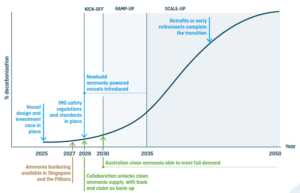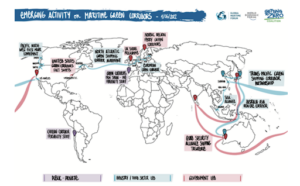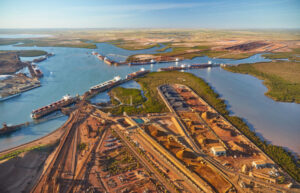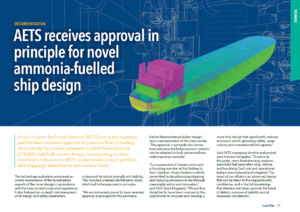
Ammonia-powered vessels could be deployed on the iron ore trade routes between West Australia and East Asia from 2028, a new consortium study suggests. More than 20 vessels could be deployed on these routes by 2030, and over 360 by 2050. While ammonia fuel supply from Australia is unlikely to be a concern, validating the safety case for ammonia fuel, policy support to close the cost gap & industry-wide collaboration must all be established in time for deployment.



